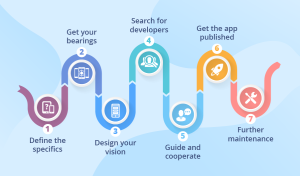The importance of localization testing in the ever-expanding game business, where virtual worlds provide players with endless experiences across the globe, cannot be overemphasized. Although finding bugs is still essential to creating games, game localization testing plays a far more complex function than just fixing bugs. It includes linguistic accuracy, cultural subtleties, and creating engaging player experiences. As video games become increasingly global, producers need to understand how important it is to conduct localization testing to make sure their products appeal to players in various languages and cultural contexts. This post investigates the complex field of localization testing in the gaming industry, covering aspects of culture, language, and market.

The Value of Game Localization Testing
The primary objectives of game localization are to augment user satisfaction, elevate brand equity, and increase income. You can ensure that consumers in the intended market interact with your localized game in the same way as they did with the original by testing it. Linguists cannot see where the text should appear during the localization process because they cannot view the game directly. In an ideal world, context would be included in every segment to ensure error-free localization; however, this is not always true. Thus, testing your game after localization fosters player loyalty by demonstrating your concern for them.
Linguistic Game Testing
Linguistic game testing focuses on checking for grammatical accuracy, terminological consistency, contextual accuracy, and other language-related issues. Conducting linguistic research can ensure that your game has excellent localization. A native linguist must perform testing to fully understand the target language and culture and adjust the translation appropriately.
Functional Quality Assurance
As its name suggests, functional quality assurance mainly concerns the localized game’s functioning. The localization process’ linguistic and cultural components are unimportant for FQA. Is there a problem with the way the game is performing? Do you have any issues or bugs? Do all the game’s mechanics follow those from the original version? These are the questions that must be addressed during the FQA process.
Conducting Playtests
Playtesting is the process of playing the game to find bugs and give feedback. It is an excellent method of testing your game because it’s the most natural way to experience it from the player’s viewpoint. If your game is limited on playtime, it is best to test the entire game, not just a select few sections. Playtesting your game for at least 7–8 hours can yield the most outstanding results if it doesn’t have a conclusion.
Cultural Acuity: Handling Diverse Cultural Environments
One of the main goals of localization testing is to overcome the complex web of cultural sensitivities. Games frequently include allusions, puns, or iconography with strong cultural connotations. But what’s funny or socially acceptable in one culture could be confusing or objectionable in another. Localization testers carefully examine these cultural components to ensure they are appropriate for the intended audience.
By cultivating cultural sensitivity, developers may design games that resonate favorably with players from various backgrounds. This promotes inclusivity and respect among the gaming community.
Linguistic Accuracy: Overcoming Linguistic Divide
Localization testing aims to translate text to overcome linguistic hurdles accurately. Translating texts, dialogues, and subtitles must be done carefully to ensure proficiency in the target language and maintain the original content and context. Localization testers carefully review translations for grammatical mistakes, colloquial idioms, and cultural quirks. They are frequently native speakers of the target language. Not only can a well-done translation help players understand the content more quickly, but it also improves immersion, allowing players to fully immerse themselves in the game without worrying about language barriers interfering with their enjoyment.
Customizing the Experience by Changing Gameplay Mechanics
Testing for localization goes beyond only text and graphics to include gaming mechanics. Modifying some gameplay elements, like control systems, level designs, and user interfaces, can be necessary to accommodate regional tastes and regulations. For instance, a game launched in Japan might need to be modified to comply with the nation’s particular gaming customs and laws. Game localization testing services work closely with developers to ensure that gameplay elements are appropriately adjusted without sacrificing the integrity of the game’s design. Developers can improve player pleasure and engagement by tailoring gaming mechanics to regional preferences, which will help players feel more connected to the game environment.
Market Growth: Opening Up New Paths
For developers, efficient game localization testing opens up possibilities by providing access to new markets and consumers. Game makers can expand their player base and reach unexplored markets by customizing games to suit regional language and cultural preferences. Localization testing enables market expansion and fosters worldwide brand recognition, regardless of the nature of the translation—for example, translating a game into different languages or adding content tailored to a particular region. Localization testing enables developers to prioritize their players’ cultural and linguistic preferences, which builds player loyalty and advocacy. Additionally, it caters to various audiences by making players feel respected and understood.
Increasing Participant Involvement: Promoting Immersion
Through the creation of immersive experiences, the main objective of localization testing is to improve player pleasure and engagement. When a game appeals to their language and cultural sensibilities, players are more likely to connect with it. Thanks to localization testing, players will feel heard and seen when their cultural allusions are honored and acknowledged in the game environment. Developers can foster a sense of authenticity and community among players by offering a localized gaming experience. This can result in higher player retention and favorable word-of-mouth recommendations. Using efficient localization testing, developers can establish more profound bonds with their worldwide player base, cultivating a community bonded by their mutual passion for gaming.
Accepting Variety in Video Games
To sum up, game localization testing is an essential component of contemporary game production that helps create games that gamers of all backgrounds and nations may enjoy. Localization testing represents a dedication to cultural sensitivity, linguistic accuracy, and player-centric design beyond simple translation and technological adaptation. To produce games that cut across national borders and promote inclusivity among the gaming community, developers must prioritize localization testing as the gaming business develops and grows internationally. Developers can open up new possibilities, build deep relationships with gamers worldwide, and lead the gaming industry toward a day when every player is seen, heard, and appreciated by embracing diversity and cultural authenticity.



